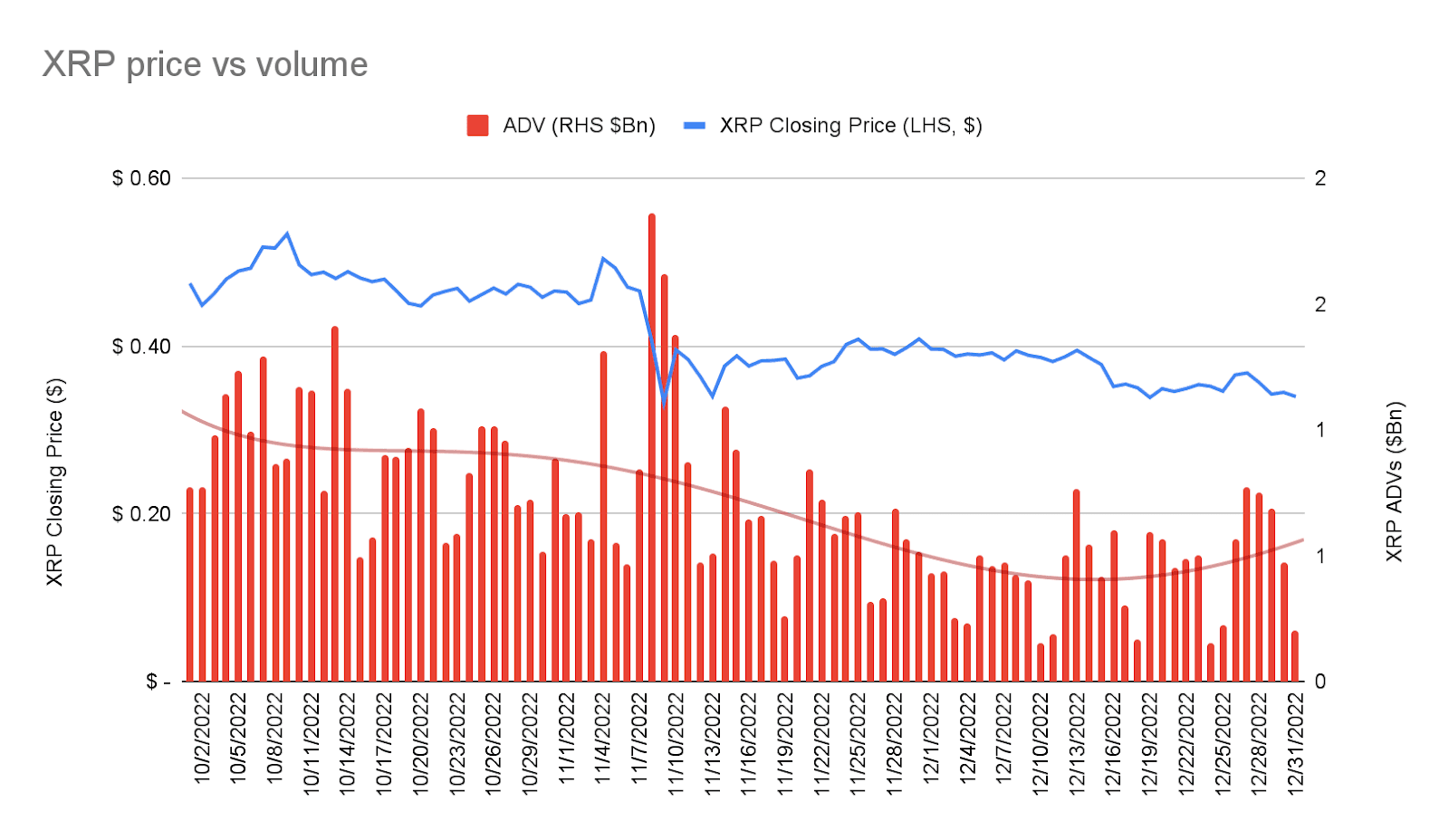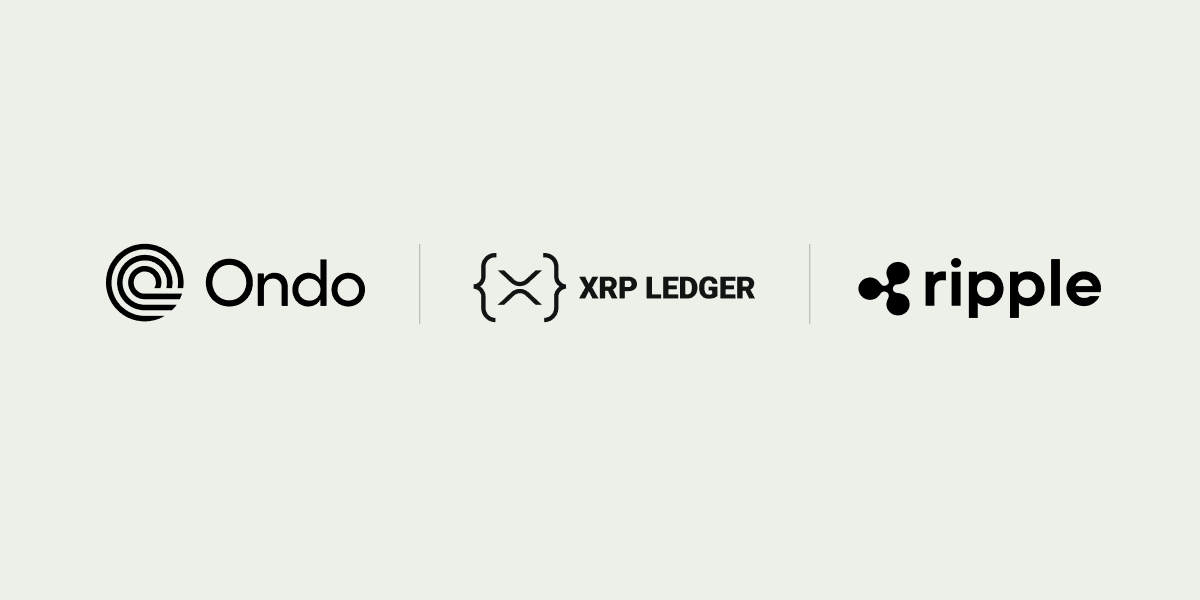Ripple publishes the quarterly XRP Markets Report to voluntarily provide transparency and regular updates on the company’s views on the state of crypto markets, including its quarterly XRP sales, relevant XRP-related announcements, and commentary on market developments over the previous quarter.
As an XRP holder, Ripple believes proactive communication and transparency are part of being a responsible stakeholder. Moreover, Ripple urges others in the industry to build trust, foster open communication and raise the bar industry-wide.
Notable Takeaways
On Demand Liquidity (ODL), Ripple’s crypto-enabled cross-border payments solution, launched in France, Sweden and Africa, now available in nearly 40 payouts markets.
Total XRP sales by Ripple, net of purchases, were $226.31M vs. $310.68M the previous quarter.
Peersyst released the first phase of the Ethereum Virtual Machine (EVM) sidechain for the XRP Ledger (XRPL) on Devnet which allows DeFi applications like Uniswap, Aave and Compound to easily launch on the XRPL.
Crypto Market Summary
Q4 of 2022 was marked by immense headwinds for both crypto and the larger macro stage. Liquidity in crypto markets suffered due to the collapse of FTX, while risk assets broadly traded poorly due to continued global monetary tightening. While the outlook remains uncertain, the industry has entered a period of consolidation where companies that build solutions with real world utility will gain the upper hand and survive and thrive through the crypto winter.
Many retail and institutional participants fled to self-custody via on-chain wallets. During this period, Binance remained a large portion of the market by way of liquidity and volumes, and faced several withdrawal cascades (some accounts estimated this at >$12B). However, institutional treasuries, funds and market-makers that traditionally relied on centralized exchange liquidity, sought new venues such as prime brokers, third party custodians and other credit-underwriting parties in order to continue to trade and hold assets in a trustworthy and risk-managed manner. This shift requires exchanges to be far more transparent about their financial stability, and a sufficient reporting mechanism remains to be developed (while some exchanges provided Proof of Reserves, unfortunately those attestations often left more questions than answers due to insufficient disclosures). Market sentiment across all exchanges – whether audited or unaudited – is tied to questions of trust. As such, market participants have drastically reduced balances posted to exchanges, increased withdrawal frequency and shortened horizons for most trading strategies, all culminating in a heavy drag on liquidity coupled with volatile prices.
By the end of Q4 2022, XRP spot markets experienced a general downtrend by way of average daily volumes (ADVs) currently at roughly $700M, down from $1.1B in Q1 2022 (Source: CryptoCompare). This is consistent with crypto more broadly, where in the derivatives market, open interest for BTC was down 15% from Q3 2022 and 30% from Q4 2021 while open interest for ETH was surprisingly more resilient, down less than 10% from Q3 2022 and 25% from Q4 2021. No single centralized exchange has benefitted from this flight to self-custody which underscores just how uncertain the landscape has become. While there were some Decentralized Exchanges (DEXs) that have capitalized on this migration, volumes still remained far below their bull-market highs (down >50%) (Source: Dune Analytics).
While the market will likely remain fragmented, the industry will see investment activity with a focus on improving core crypto primitives such as payments, custodial services, DEXs and cross-chain user experiences.
Global Regulation
The collapse of FTX is putting pressure on regulators globally to perform greater due diligence and move toward providing regulatory guidelines to the industry. While several jurisdictions, such as the UAE, UK, Switzerland and Singapore, have provided regulatory frameworks for crypto, the US continues to remain distantly behind. Regulatory clarity is required for the industry to grow sustainably and scalably – something Ripple has long advocated for.
The SEC continued its campaign of regulation by enforcement without providing clarity to the market. Most recently, the SEC charged Genesis and Gemini with allegedly selling unregistered securities related to their yield products. US banking regulators issued warnings to banks that dealing with cryptocurrencies could expose them to risks such as contagion and fraud due to the lack of oversight and due diligence in the sector. Coinbase settled a case with the New York Department of Financial Services and agreed to pay a $50M fine and invest another $50M in its compliance efforts. In addition, the New York Attorney General filed a lawsuit against Alex Mashinsky, former CEO and co-founder of Celsius, for defrauding investors.
In the EU, the final vote for the Markets in Crypto Assets (MiCA) bill was postponed to April 2023 and Coinbase was granted approval by the Central Bank of Ireland to operate as a Virtual Asset Service Provider (VASP). Brazil President Jair Bolsonaro signed into law the country’s first crypto regulatory framework and Hong Kong reaffirmed its pro-crypto stance as it aims to become a crypto hub.
Ripple released its UK policy whitepaper outlining its regulatory ambitions to propel the UK toward global crypto hub status by driving consumer protections, assessing crypto assets according to different risk profiles, and ultimately growing the industry in the UK.
In 2023, stablecoin regulation will likely be top priority and, in the US, Ripple expects major bills from last term to be reintroduced (e.g., RFIA and DCEA) as Congress seeks to impose tighter controls in the wake of FTX’s demise.
Update on the SEC Lawsuit Against Ripple
On December 2, Ripple’s reply brief in support of its motion for summary judgment where the company asked the court to grant judgment in the company’s favor was made public. After two years of fighting this lawsuit on behalf of the entire crypto industry and American innovation, the case is fully briefed and Ripple is proud of its defense and feels more confident than ever as it awaits the Judge’s decision. Decision timing is in the Judge’s hands but the company is hopeful to see a ruling in 2023.
XRPL On-chain Activity
On-Chain Activity | Q4 2022 | Q3 2022 | Q4 2021 |
|---|---|---|---|
Transactions | 106,429,153 | 103,039,261 | 130,833,193 |
XRP Burned for Transaction Fees | 101,968 | 146,433 | 365,701 |
Avg cost per transaction (in XRP) | 0.00096 | 0.0014 | 0.0028 |
Average XRP Closing Price (in USD) | 0.42 | 0.36 | 1.02 |
Avg cost per transaction (in USD) | 0.000000004 | 0.000000004 | 0.000000008 |
Volume on DEX (in USD) | 85,772,947 | 117,372,932 | N/A |
Trustlines | 8,731,628 | 9,115,964 | N/A |
Number of New Wallets | 228,143 | 125,225 | 624,368 |
(Source: XPMarket.com and CoinMarketCap)
Despite a broader market slowdown, on-chain activity on the XRPL stayed relatively buoyant. As trading volumes across the broader market slowed, the number of transactions on the ledger increased by over three million, spurred primarily by NFT activity once the XLS-20 amendment passed on November 2, 2022. Although the number of transactions increased, XRP burned due to transaction fees declined by 33%, and the average cost of a transaction in USD remained virtually zero. During that same period of time, the average transaction fee on the Ethereum network was $2.75 and on the Bitcoin network was $1.23.
XRPL Interoperability
In Q4, Peersyst announced the release of the first phase of the Ethereum Virtual Machine (EVM) sidechain for the XRPL on Devnet. This milestone means more developers can easily access the XRPL’s feature set (such as its speed, sustainability and low-cost transactions) while being able to code Solidity-based smart contracts. Additionally this opens the door for successful DeFi applications like Uniswap, Aave and Compound, to easily launch on the XRPL.
Global Growth of On-Demand Liquidity Reached Record Highs
Ripple remains one of the few crypto firms well capitalized and ready to meet robust customer demand in 2023 head-on by continuing to hire strategically, invest in attractive opportunities and build a platform that can allow traditional institutions to access crypto innovation on the XRPL in a safe and secure fashion.
Ripple wrapped up 2022 with its strongest year to date focusing on crypto utility and scaling its ODL product. As RippleNet continues to grow, despite a tumultuous market, Ripple experienced the highest amount of demand from both new and existing customers adopting ODL. Today, Ripple’s crypto-powered payment solution is available in nearly 40 payout markets, up from just three markets in 2020.
Last quarter, ODL was launched in France and Sweden in partnership with payments providers Lemonway and Xbaht respectively, and in Africa via MFS Africa, a leading payments gateway in the region. Additionally, Ripple expanded its customer base to corporates that are looking to experience the benefits of crypto-enabled cross-border payments for their business.
Ripple has processed nearly $30B worth of volume and 20M transactions since RippleNet was first launched. In 2022, approximately 60% of those payments were sent through ODL.
Disciplined, Responsible Stakeholders: Q4 Sales and Purchases
Last quarter, total XRP sales by Ripple, net of purchases, were $226.31M vs. $310.68M in the previous quarter. Ripple has continued to sell XRP only in connection with ODL transactions.
Summary of Ripple’s XRP Sales (dollars in millions) | Q3 2022 | Q4 2022 |
|---|---|---|
Total ODL-related sales* | 2,819.63 | 2,964.28 |
Total purchases | 2,508.95 | 2,737.97 |
Net Sales | 310.68 | 226.31 |
Global XRP volume | Q3 2022 | Q4 2022 |
|---|---|---|
ADV XRP (dollars in millions) | 789.72 | 698.45 |
Total XRP volume (dollars in billions)** | 72.65 | 64.31 |
Net sales as % of total volume | 0.42% | 0.35% |
*All ODL-related sales are attributed to the growth and adoption of ODL.
**Note: Figures were compiled using the CryptoCompare API for daily TopTier aggregate volumes which reflects total XRP volume in dollars by exchanges that CryptoCompare lists in the TopTier.
Ripple has been a buyer of XRP in the secondary market and expects to continue to undertake purchases as ODL continues to gain global momentum.
Total sales by Ripple, net of purchases, ended the quarter at 0.35% of global XRP volume according to CryptoCompare TopTier (CCTT) volumes.
Leases
Certain wallets used for XRP sales also provide short-term leases to market makers and participants. This is worth noting, given they are often incorrectly interpreted by market participants as sales. XRP associated with leases are ultimately returned to Ripple. The total amount of leases outstanding in Q4 2022 was 57.7 million XRP.
Reported Volume and Price

During Q4 of 2022, the price of XRP declined 30% along with volumes which declined roughly 40%. ADVs were $689M, down 13% from Q3 2022 and down 64% from Q4 of 2021.
Escrow
In Q4 2022, three billion XRP were released out of escrow (one billion each month) in line with prior quarters and the official escrow arrangement. In total, 2.1 billion XRP were returned and subsequently put into new escrow contracts throughout the quarter. For more information on the escrow process, see here. Note: All figures are reported based on transactions executed during the quarter.
Building with the XRP Ledger Community
Time Magazine Names XRP Ledger Project Best Innovation in 2022
Last year, the Colombian government’s National Land Agency launched a national land registry on the XRP Ledger to store and authenticate Colombian property titles. Developed with Peersyst, the registry recorded its first property in July, and Time Magazine recognized this initiative as one of the ‘Best Innovations in 2022.’ This unique use case for non-fungible tokens (NFTs) demonstrates the range of utility possible with the XRPL.
XLS-20 is Now Enabled on the XRP Ledger
Last quarter, XLS-20 went live on the XRP Ledger Mainnet. This represents a considerable milestone for developers and builders utilizing the XRPL for their native NFTs projects and apps, which can represent assets that are each unique along with operations to enumerate, transfer and hold such tokens.
XRPL-based NFTs were designed with efficiency in mind. Significant transaction expenses are a fundamental problem for developers minting NFTs on other leading layer-1 blockchain solutions. Gas fees can add hundreds of dollars to the final price of an NFT and vary based on a given network’s user traffic and congestion.
NFTs on the XRPL also include automatic royalties which standardize royalty enforcement as one of the benefits of the ledger’s built-in DEX. For creators, NFT transfer fees provide them a share of the revenue when the NFT is bought and sold. They can also designate a third party who mints and sells the tokens on their behalf.
Community projects like xDude, Pixel Ape Rowboat Club (PARC), X-Tokenize and XRP Junkies are proof of the excitement and NFT use cases made possible with the XRPL’s low transaction cost and high transaction volume. Since going live, more than 800K NFTs have been minted with 410.6K transacted bringing XRP volume to 12.9 million.







